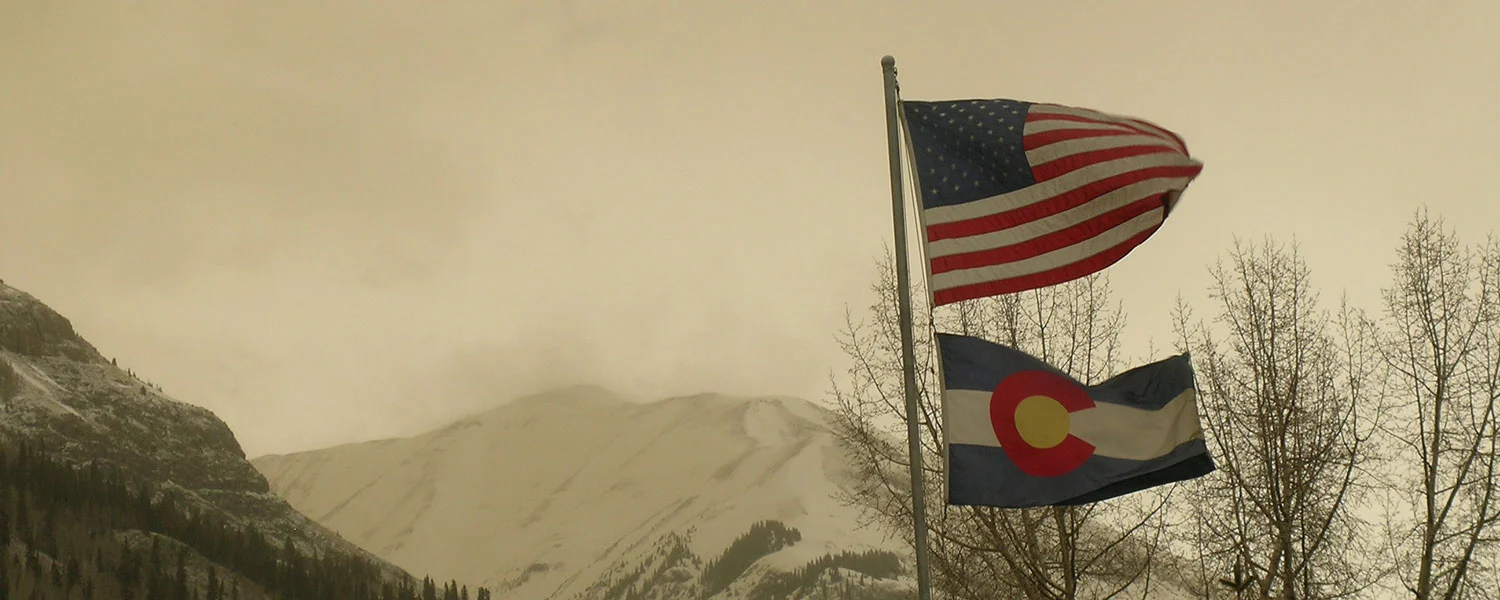Greetings from Silverton,
Based on observations over the past week, I can now report that dust season has arrived, albeit just barely, at Senator Beck Basin, with an extremely weak D1-WY2014 dust layer deposited early on the morning of February 16. Ambiguous evidence was present on the snow surface near Swamp Angel Study Plot (SASP) later that morning, confounded by heavy vegetation debris, and I could not actually see a dust layer in my snow profile at SASP. However, over the past week, clear cut evidence of the layer was exposed farther south, at Molas and Coal Bank passes. This event arrived on generally W'ly winds and appears to have been concentrated to the south of Silverton. We have heard reports of dust at the Telluride ski area, just west of Senator Beck Basin.
A sample of the snow containing this D1-WY2014 layer was collected at SASP and is now at USGS in Denver for mass analysis. This D1 event is likely to be the weakest dust-on-snow event, with the lowest mass, that we've ever documented at SASP. Soon after deposition, the D1 dust was buried under 8" of clean new snow and D1 has had no effect on snow albedo at SASP.
However, farther south in the Animas River valley, the D1 dust layer is substantially heavier and has become clearly visible. As of yesterday, D1 had fully emerged at the snowcover surface from beneath a thin layer of more recent clean snow and was significantly reducing snow albedo at low elevations in the Animas watershed. Snowcover was already substantially diminished in those lower elevations of the Animas during the prolonged January dry period but rebounded, a little, in late January and early February. Durango has effectively no snow on the ground at all, and has been unusually snow-free all winter. However, between the recent re-emergence of vegetation (i.e., bushes) and patches of bare ground, and the addition of the D1 dust to the snowpack, that lowest elevation snow cover is once again being rapidly ablated during sunny weather by absorption of (short wave) solar radiation in the plants and open ground, and its subsequent re-emission as thermal (long wave) radiation, and by direct absorption of solar energy in the D1 dust at the snow surface. Thus far, the Animas River gauge at Durango shows no evidence of a significant pulse of low-elevation snowmelt discharge.
A similar scenario is likely unfolding in the Dolores watershed, with very thin snowcover in the lower watershed. D1 is perhaps also enhanced by an earlier, local dust deposition in late January in the Dolores River valley. Observations of dust in the snowpack near Rico could not rule out local sources of dust, versus a low elevation dust storm from the Colorado Plateau, in that January case. But, observers near Purgatory ski area also observed a late January layer, suggesting that this was a very 'local', low elevation Colorado Plateau event. No dust was observed at Senator Beck Basin during that period.
Thus, in the absence of any reports of dust-on-snow from other locales farther north and east of us, or from the Wolf Creek Pass locale, it appears that D1-WY2014 was confined to the southwestern-most San Juan Mountains. Although the layer is enhancing snow cover ablation in the lowest elevation snow cover in the Animas and (likely) Dolores watersheds, and perhaps at higher elevations in the La Plata Mountains located between those two watersheds, more recent snowfalls buried the dust layer at higher elevations just a few miles farther north, and the D1 layer is vanishingly weak at Red Mountain Pass. Happily, the strong winds associated with Storm #14 on February 19 also failed to deliver a visible dust-on-snow layer at Swamp Angel Study Plot.
More soon,
Chris Landry

